As the purpose of an HVAC system is to keep the indoor temperature comfortable, people in many countries do not require investing in an HVAC system for cooling, ventilating, or heating. However, when it comes to Canada, where the temperatures can get extreme, especially in wintertime, heating your home with an effective system is essential. This prevents surprises when temperatures are at –15 Celcius or lower. Even during summertime, this is becoming increasingly based on the heatwaves in recent years.
This explains why the HVAC industry has seen stable growth in Canada, according to data published by Statista. That is because over 9 in 10 households in Winnipeg, Manitoba, and Brantford, Ontario (both 92%), had an air conditioner, followed by the Ontario census metropolitan areas (CMAs) of St. Catharines–Niagara (91%), Windsor (90%) and Barrie (90%). All the other CMAs that had at least 8 in 10 households with an air conditioner were also located in Ontario, except for Regina, Saskatchewan (85%), and Kelowna, British Columbia (84%).

An HVAC system has several components that work together to regulate the temperature and ventilation in a building, and although it looks simple since it’s just the tapping of a device or pressing of a button to choose the temperature you want in your house or room, the technology behind it, the HVAC system, is complete and complex in its three modes:
- The heating system keeps the room or house/building warm during colder months. Traditional systems include gas furnaces, radiators, heat pumps, boilers, and space heaters.
- Ventilation is the process of bringing fresh air into an enclosed space, and in a HVAC, the function commonly has an air handler, ducts, and the return vent’s ability to control indoor temperatures and balance humidity levels.
- Air conditioning keeps the chosen space cool in warmer seasons, and the system includes central air conditioners, window ACs, heat pumps, and ductless mini-split systems.
Considered the primary home heating system in Canada, the forced air furnace was present in 2021 (last stats) in more than half of Canadian households (51%), while one-quarter had electric baseboard heaters (25%). Less than 1 in 10 households were heated with a boiler with hot water or steam radiators (8%) or a heat pump (6%).
Governmental data also adds that approximately 1 in 50 Canadian households (2%) reported owning a heating stove, three-quarters of which were wood-burning stoves.
Hightech, to better understand how HVAC works, first, the system starts with the thermostat, responsible for turning the system on and working until the set temperature is reached. In a traditional HVAC, a heating element warms the air, and the blower blows it into the duct system to be distributed throughout the home. But if the air conditioner is running, the outdoor unit pulls warm air in, passes it over coils where the refrigerant cools it further, and then blows the chilly air into the home.
How to make the right choice
The main point is to consider what parameters your HVAC system will need to reach its work efficiently. What is the house/building size? A larger space will need a unit that can generate more than a smaller one, obviously. The size of the unit is crucial in terms of air quality/quantity. A less powerful HVAC will work harder in a large space, which generates higher energy bills (it also can force the machine and reduce its lifespan.)
To save on utilities is also essential to understand about energy efficiency rating. There are HVAC options on the market that save more electricity at home, consuming less energy, and resulting in lower utility bills in the long term. There are some terms you should know, such as:
- SEER (Seasonal Energy Efficiency Ratio): This is the most common metric to denote energy-efficient HVAC units like air conditioners, heat pumps, and furnaces. The higher the SEER rating, the more efficient the system. According to the Learning Metrics website, the SEER rating is not as easily calculated as the EER rating (Energy Efficiency Ratio). EER is the basic metric that is calculated by dividing maximal output (BTUs) by maximal wattage (W) when an AC unit, for example, is running at 100% output.
- HSPF (Heating Seasonal Performance Factor): is specifically used to measure the efficiency of air source heat pumps. Like SEER, a higher HSPF rating indicates a more efficient heat pump – and, consequentially, energy savings on the heating bills. To know the HSPF is necessary to divide the total heating output (measured in BTU) over a heating season by the total electric energy input (measured in watt-hours).
- AFUE (Annual Fuel Utilization Efficiency): AFUE is a thermal efficiency measure of space-heating furnaces and boilers. A higher AFUE rating, as in the examples above, signifies a more efficient furnace – which means that if efficient, it will provide lower heating costs. The energy efficiency standards being considered for three-phase central air conditioners and three-phase central heat pumps, according to the Government of Canada.
| PRODUCT TYPE | PRODUCT SUBCATEGORY | SEER2A ENERGY EFFICIENCY STANDARD IN CANADA | HSPF2b (Climate Region IV) energy efficiency standard in the United States | HSPF2 (Climate Region V) energy efficiency standard in Canada |
| AIR CONDITIONERS OTHER THAN THOSE THAT ARE SPACE CONSTRAINED OR SMALL-DUCT-HIGH-VELOCITY WITH A COOLING CAPACITY LESS THAN 65,000 BTU/HR | SPLIT SYSTEM/ SINGLE PACKAGE | 13.4 | – | – |
| HEAT PUMPS OTHER THAN THOSE THAT ARE SPACE CONSTRAINED OR SMALL-DUCT-HIGH-VELOCITY WITH A COOLING CAPACITY LESS THAN 65,000 BTU/HR | SPLIT SYSTEM | 14.3 | 7.5 | 6.0 |
| SINGLE PACKAGE | 13.4 | 6.7 | 5.4 | |
| SPACE-CONSTRAINED AIR CONDITIONERS WITH A COOLING CAPACITY LESS THAN 30,000 BTU/HR | SPLIT SYSTEM | 12.7 | – | – |
| SINGLE PACKAGE | 13.9 | – | – | |
| SPACE-CONSTRAINED HEAT PUMPS WITH A COOLING CAPACITY LESS THAN 30,000 BTU/HR | SPLIT SYSTEM | 13.9 | 7.0 | 5.6 |
| SINGLE PACKAGE | 13.9 | 6.7 | 5.4 | |
| SMALL-DUCT, HIGH-VELOCITY AIR CONDITIONERS WITH A COOLING CAPACITY LESS THAN 65,000 BTU/HR | SPLIT SYSTEM | 13.0 | – | – |
| SMALL-DUCT, HIGH-VELOCITY HEAT PUMPS WITH A COOLING CAPACITY LESS THAN 65,000 BTU/HR | SPLIT SYSTEM | 14.0 | 6.9 | 5.5 |
| a Represents seasonal energy efficiency ratio 2. b Represents heating seasonal performance factor 2. | ||||
Most common HVAC systems
As mentioned in Forbes Home, house owners can expect to pay around $3 to $7 per square foot for the installation of an HVAC system, and to make the right choice it is important to know the most popular systems options on the market:
- The Split System is ideal for homes with existing ductwork. It uses a traditional thermostat to control the temperature, for cooling or heating the entire structure. In most cases, the heating unit is in a basement or indoor storage space. While the cooling system is located outside and connects to a building’s ductwork through a series of tubes, the heater is gas-powered and uses an evaporator or fan to push heat through a building’s ductwork.
- Installed in individual rooms, the Duct-Free Mini-Split systems are more common in office buildings and hotels. Since the cooling or heating area is specific and can be used only for occupied rooms, it prevents energy loss. However, on the other hand, duct-free systems can be expensive to install.
- Easy to set up, the portable Spot Cooler is a portable air conditioner, that works by drawing in ambient air, pushing it over a closed-loop coil cooled by refrigerant, and pumping it back into the space. Convenient, versatile, and easy to move (wheels), this type can operate in any location with an electrical power source. While cooling the air, spot coolers pump leftover warm air out through a flexible tube, which must lead out through a door, or window or drop the warm air.
- Ideal for residential and commercial settings, Hydronic Heating is a type of central heating system that utilizes water as its primary heat source. Basically, the system uses a boiler to heat water and then distributes it throughout a building using a series of pipes under the floors. Once the liquid reaches a radiator or baseboard heater, it distributes heat throughout the room. Some people even choose to install hydronic heating tubes or coils underneath their sidewalks and driveways, so they melt any snow that falls.
- With a cooling and heating system, and recommended for small rooms, workshops, and offices, the portable Heat Pump is a compact machine that sweeps up heat from the air outside and moves it into the air inside for heating. This option also runs on electricity and has wheels for easy movement. This system has a reversing valve inside the unit that allows users to switch between heating and cooling.
- The Zoned system, as the name suggests, allows occupants control over the temperature in separate rooms or areas in a building, saving on energy, consequentially. If you own larger homes, you may choose to install multiple HVAC systems to control the temperature on different floors. Another option, to improve energy efficiency, is installing manual or automatic dampers in a system’s air ducts to control the amount of airflow in different areas.
- Packaged Heating and Cooling is ideal for small buildings, since the packaged heating and cooling systems are smaller compared to the split system. It contains the “indoor” and outdoor sections in one self-contained cabinet that is located outdoors, allowing heating and cooling components housed in a single unit – frequently stored on a roof. This system can help you save on electricity as the indoor and outdoor sections have been tested together to optimize performance.
What about the energy bills?
During summertime, air conditioning can consume a lot of electricity, which means higher energy bills with the excessive increases in Saskatchewan (+12.3%), Alberta (+9.8%), and Prince Edward Island (+5.7%) according to the government’s last data.

The numbers collected from our experts are also alarming. To have a clearer view, in August 2022, the RRO rate in Calgary was 17.341¢/kWh, and one year later, in 2023, reached 31.858¢/kWh (83.7%). In Edmonton, by comparing the same period, the increase was 89.96%.
Regarding heating costs, the coolest months also bring higher utility bills. In January 2024, the Alberta Electric System Operator (AESO) issued a grid alert in response to extreme cold temperatures, causing high demand across the province. Consequentially, in January 2024, a new record for hourly peak demand was set at 12,384 megawatts (MW) compared to the previous record set in December 2022, 12,193 MW, which was reflected in pricey bills.
That is one of the reasons why many people choose fixed rates instead of Regulated Rates Option (RRO). The main goal is to avoid paying variable (float) prices, especially considering that consumers can find fixed-rate plans at more affordable levels. You can click here to compare retailer’s prices and see for yourself.
But there is more. Many people may not know, but proper maintenance can lead to significant energy savings, as once the efficiency is optimized, there is lower energy consumption and lower energy bills.
To keep everything in place it is necessary to clean or replace air filters, check the thermostat settings to verify if they are set correctly, inspect the outdoor unit to check dirt that may be accumulated (clear away any obstructions), inspect the furnace, and clean air vents and registers. Simple, the owner can make this checklist.
If possible, schedule once a year a regular professional maintenance is important to keep the appliance quality and to identify underlying issues. We talked more about it here.
The last tip is, as the HVAC is powerful and consequentially noisy in most cases, avoid installing it near the bedrooms. This is an excellent choice when possible.











